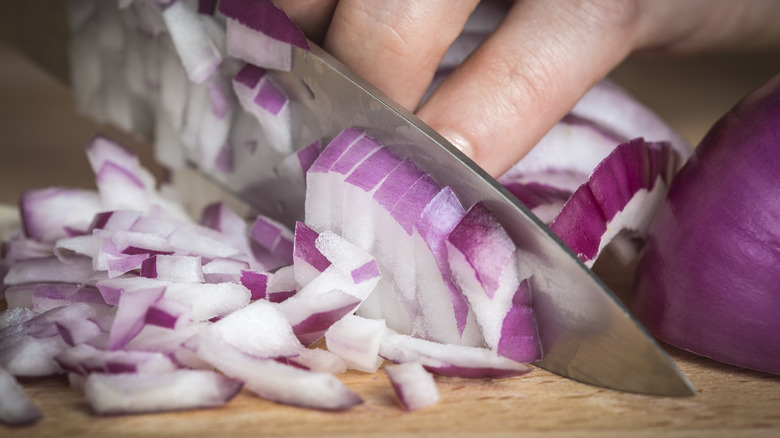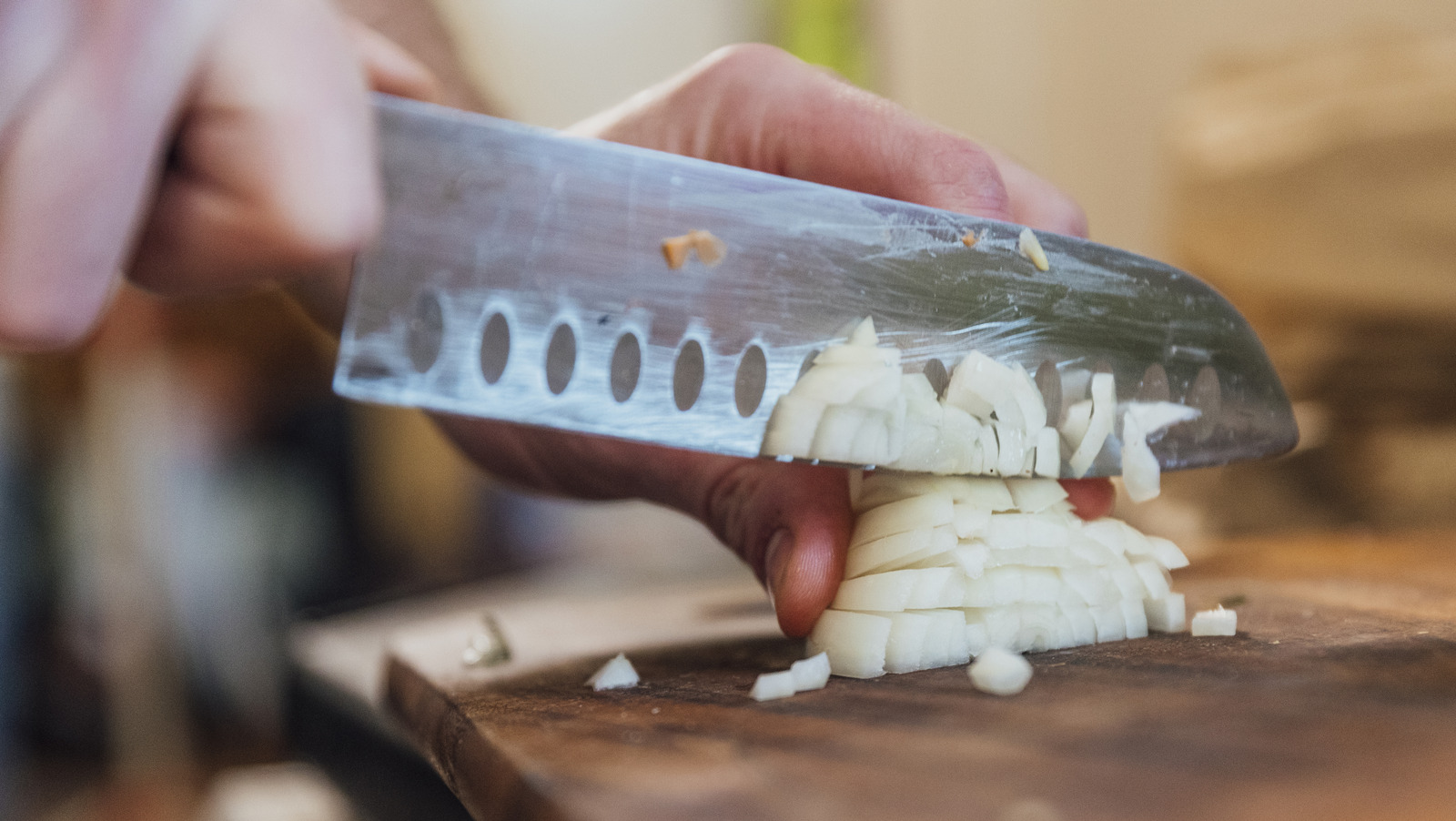Of all the kitchen tips and tricks that are passed from cook to cook, variations on how to chop onions without crying never seem to end. From one celebrity chef’s recommendation for fanning the noxious fumes away to a high-carb bread-chewing trick for reducing tears, we think we’ve heard them all. Some of the tips are more practical than others, and some might even be downright unsafe, like the recommendation to keep your knife wet during the cutting process.
The wet knife hack involves dipping the blade of your knife into water with each cut. There’s a little science behind the technique –- water helps to keep the volatile gas released by the onion as it’s cut from becoming airborne. When that gas hits the water of your eye, it becomes a weak acid, causing your eyes to tear up and rinse away the irritant. But repeatedly stopping your chop to wet the knife is not only inefficient, it also prolongs the time you are standing over a pile of cut onions and makes the whole process slippery and less safe. There are far better recommendations you should know about.
What to do instead of wetting your knife

If you can plan ahead, pre-chilling your onions for a short time keeps some of the irritating fumes from escaping into the air. Using goggles to protect your eyes might help a bit, although the vapor can also attack inside your nose. But the ultimate tip for no-tear onions, shared by none other than Jacques Pépin, is to keep your knife sharp. A sharp knife crushes the onion cells less, leading to less burning vapor released — but it also makes your chopping time shorter. Efficiently cutting the onions with a well-cared-for tool wins every time over other methods for preventing tears.
What all the effective tips for tear-free onion cutting have in common is that they prevent the volatile sulfur-containing compound that’s released when the onion is sliced from reaching your eyes. Understanding that chemistry can help you cope by choosing the most readily available method when it’s time to dice –- and you’re not limited to only one trick! If your eyes are particularly sensitive, feel free to double up on techniques if you can.







